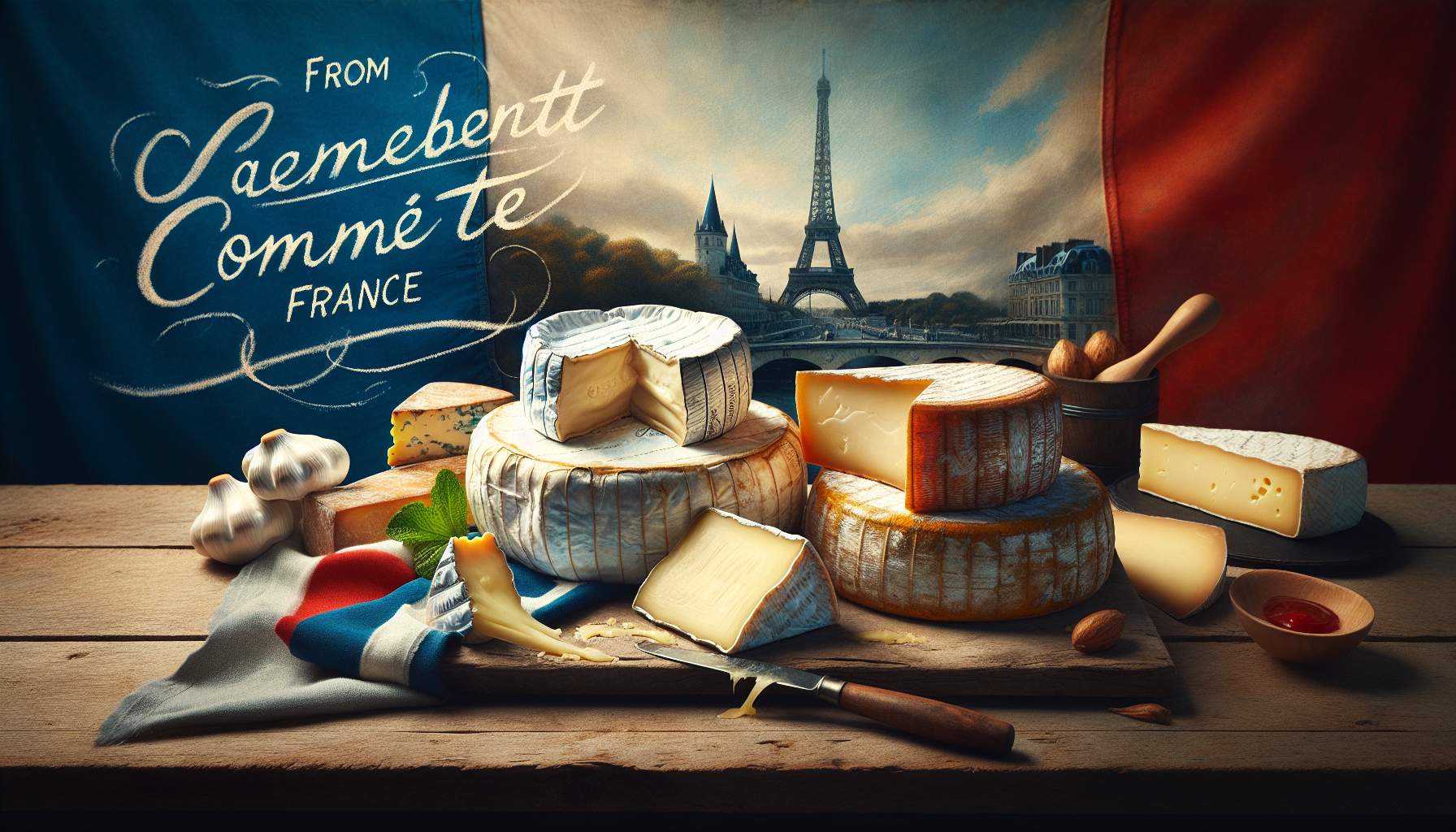Cheese as a Cultural Phenomenon: A Deep Dive into France's Love Affair with Cheese
Cheese. For many in the United States, it's that oozy, melty goodness resting atop pizzas or mixed lovingly into a creamy mac and cheese. But let's take a step across the pond to France, where cheese takes center stage in the most unapologetic, glorious way possible. Imagine walking into a quaint French bistro. Instead of a big plate of crackers and busy accoutrements, you're presented with a glorious, unembellished wheel of cheese. No distractions—just cheese in its purest form.
This striking difference is more than just a serving style; it's a reflection of cultural perspectives on cheese. "In the US I think we're still getting over cheese being an ingredient," says John Montez, a certified cheese pro at Murray's Cheese. Yet here we are, diving deeper into the philosophy that cherishes cheese for its artistry and diversity.
In France, cheese is an experience, drawing you in with a range of textures and flavors that clue you into the deep-rooted artisan traditions of the French countryside. Building a cheese plate, Montez assures, is an art form of its own. Forget grabbing whatever is closest on the dairy shelf. A cheese board requires thought and, of course, taste-testing—a delightful task if you ask us.
Crafting the Perfect French Cheese Plate
When assembling your artisan cheese plate, simplicity is key. Start with three to five varieties. Odd numbers, Montez suggests, are not only visually appealing but beckon a balance of flavors. Your selection could range from a hard cheese like Comté, renowned for its nutty complexity, to a sumptuous Brie, invoking the tender softness the French excel in, and perhaps a daring Roquefort for the adventure seekers amongst us.
Let's venture into texture and flavor territory. Mixing soft, hard, or semi-firm cheeses provides a dynamic taste experience. But what of milk types? Montez hints at the magic of combining goat, sheep, and cow's milk cheeses, each contributing unique notes to your gustatory symphony.
Interestingly, seasonality also plays a role. Though we tend to focus on seasonal fruits and veggies, Montez presents the case for aligning your cheese selections with the time of year. Perhaps a fresh chèvre in spring when the greenery graces farm pastures or a lush, deeply flavored Brie as winter draws close.
And serving? "Refrigeration mutes cheese's flavors," Montez emphasizes. Engage in a French tradition: buy what you'll savor that day from a cut-to-order cheese shop, skipping the chill of the fridge. Doing so maintains the cheese's integrity, bringing you closer to the flavors envisioned by the artisans.
Exploring French Cheese Varietals in the US and Beyond
Let's delve into the heart of French cheese favorites, starting with those we can find stateside. Comté, for instance, remains a beloved choice, whether enjoyed as a summer 12-month aged delicacy or a bold winter "salt Comté." Then there's the rustic, tangy Tommes de Savoie, and the exotic Ossau Iraty from the Basque country—a testament to France's deliciously varied terrains.
Mimolette, the vibrant crowd-pleaser, seduces with its butterscotch hue, while French blue cheeses like the regal Roquefort and its cousin, Bleu D'Auvergne, entice with creamy complexities. And, of course, the 1924 Bleu—a curious mixed milk adventure based on pre-PDO Roquefort ideals.
For the soft cheese aficionado, options abound. From airy chèvre to the lush, gooey elegance of Brillat Savarin, you’re bound to find a cheese that delights.
Dare to explore further afield? Some cheeses, like the velvety St. Marcellin or the iconic Camembert de Normandie, might require a trip to France to fully appreciate their raw milk glory.
Enhancing the Cheese Experience: Drinks and Pairings
While French wines are almost perfectly married to their cheese counterparts, you've got room to experiment. Traditional pairings, such as a Loire Valley goat cheese with Sancerre, showcase terroir and heritage beautifully. However, as Montez hints, the palate ought to wander—ever tried fresh goat cheese with peated Scotch?
If accompaniments are on the menu, think simplicity—a fresh baguette, a hint of light honey, or preserved cherries. After all, French cheese is an experience first and foremost, a treat best savored with minimal distractions.
Whether you're savoring it in the bustling streets of New York or a serene countryside in Provence, one thing remains clear: cheese is more than food—it is a language of passion, tradition, and impeccable taste.
References
Serious Eats articles and recipes.
